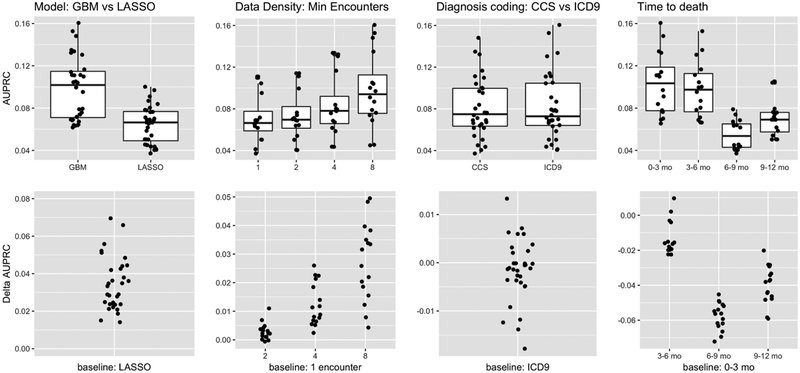Figure 4.
Performance measured by AUPRC, which takes into account the prevalence of the positive class (i.e., patients who died within one year of the prediction time). We show how performance compares as we vary one experimental factor at a time, across all other settings of the other factors (first three columns). We also show how performance varies with respect to how far in the future the positive cases die. The top row shows absolute AUPRC while the bottom row shows the change in AUPRC relative to the indicated baseline. These results indicate that: a) Again there is consistent benefit to modeling non-linearities and interactions, b) Although models do not discriminate between positive and negative cases more accurately as we increase data density requirements, the AUPRC still increases due to increasing prevalence of the positive class, c) There is again no benefit to coding diagnoses as CCS vs ICD-9 codes, and d) As expected it is easier to discern positive cases when death occurs farther in the future.

